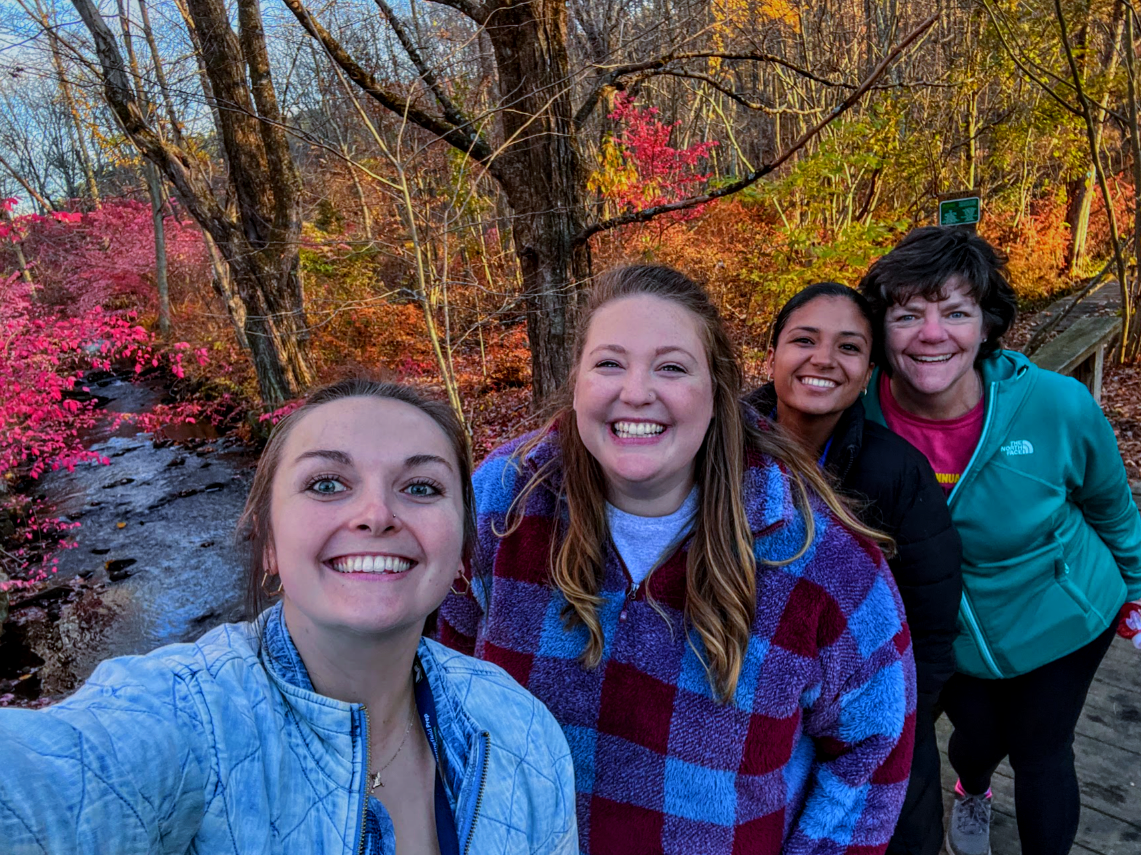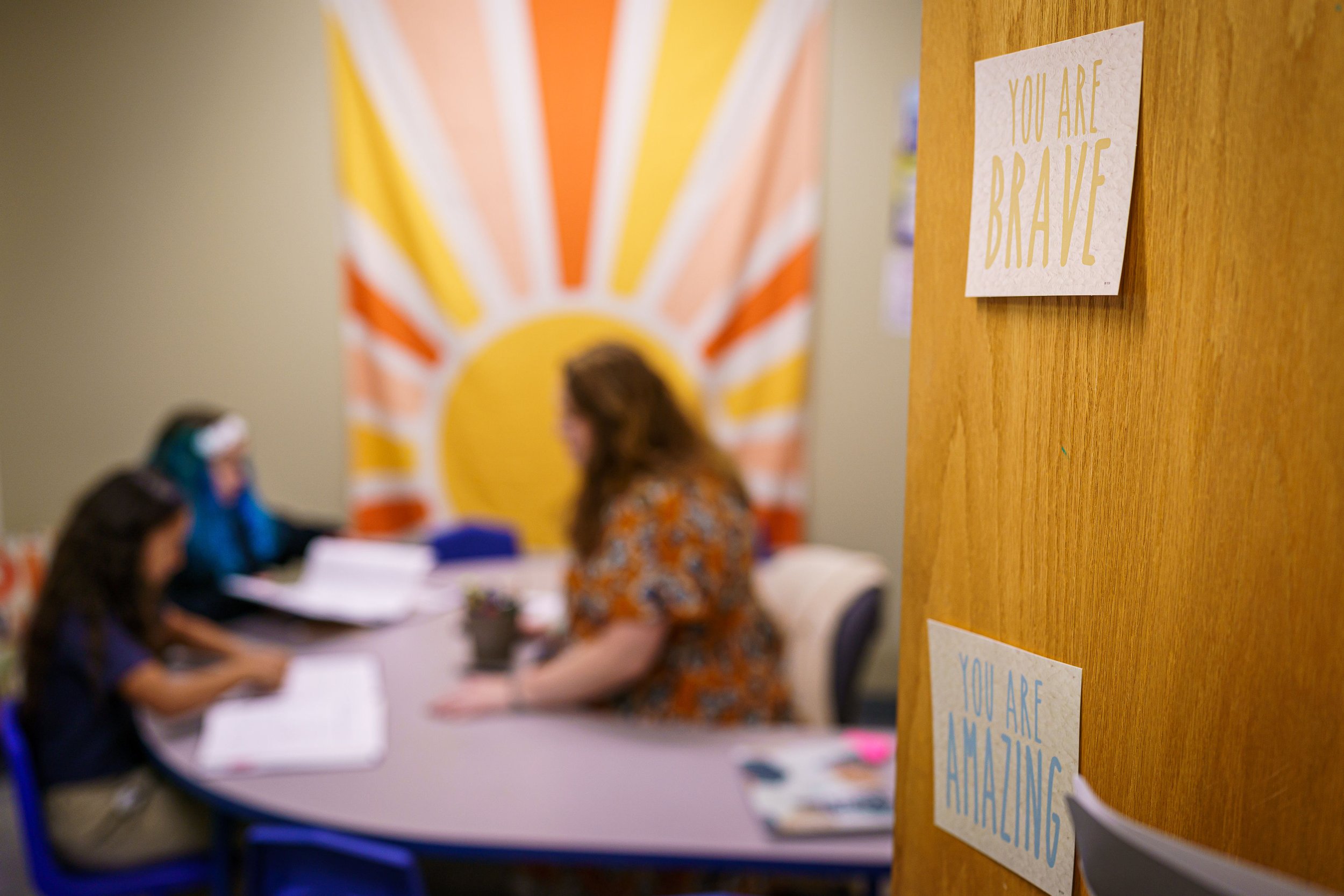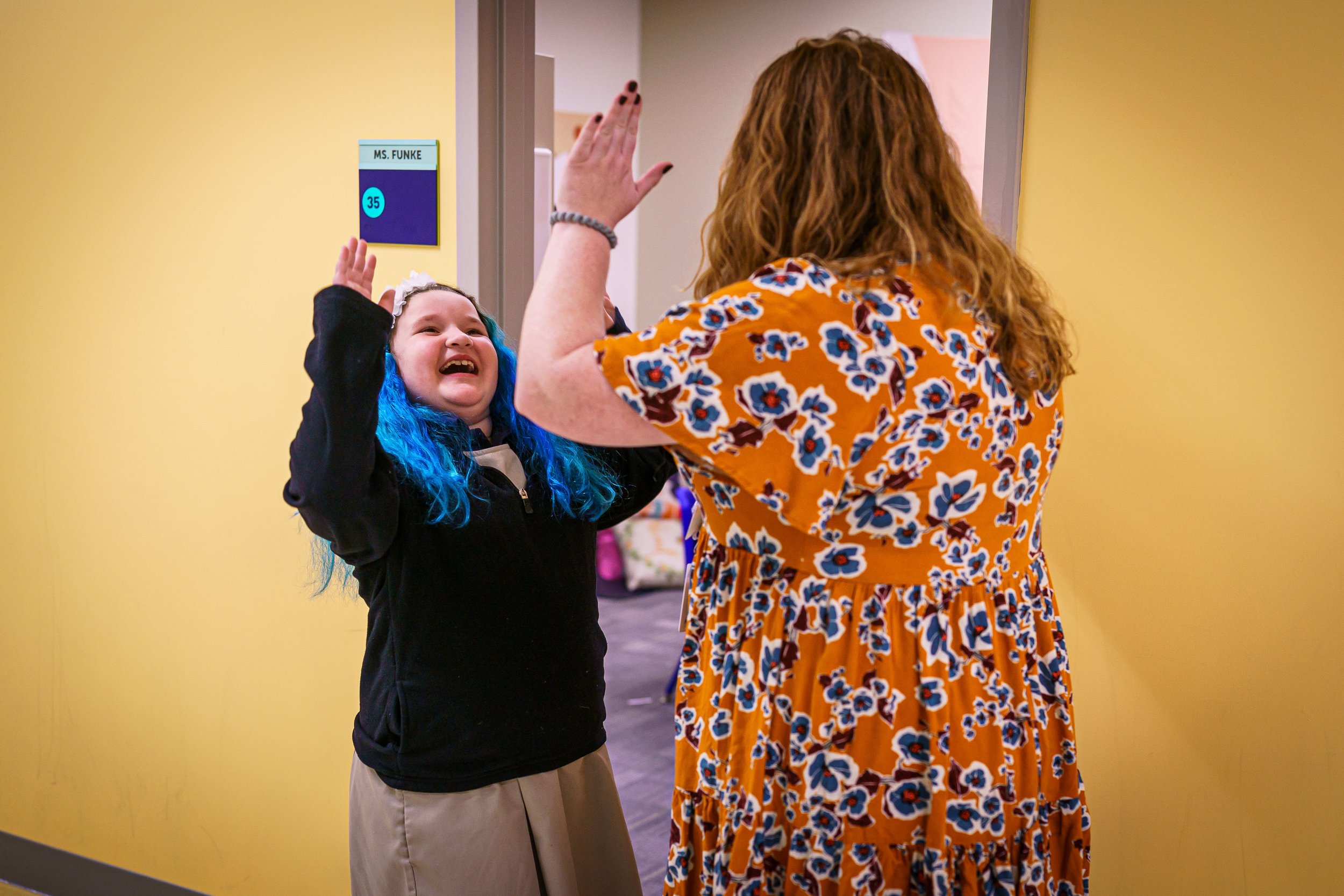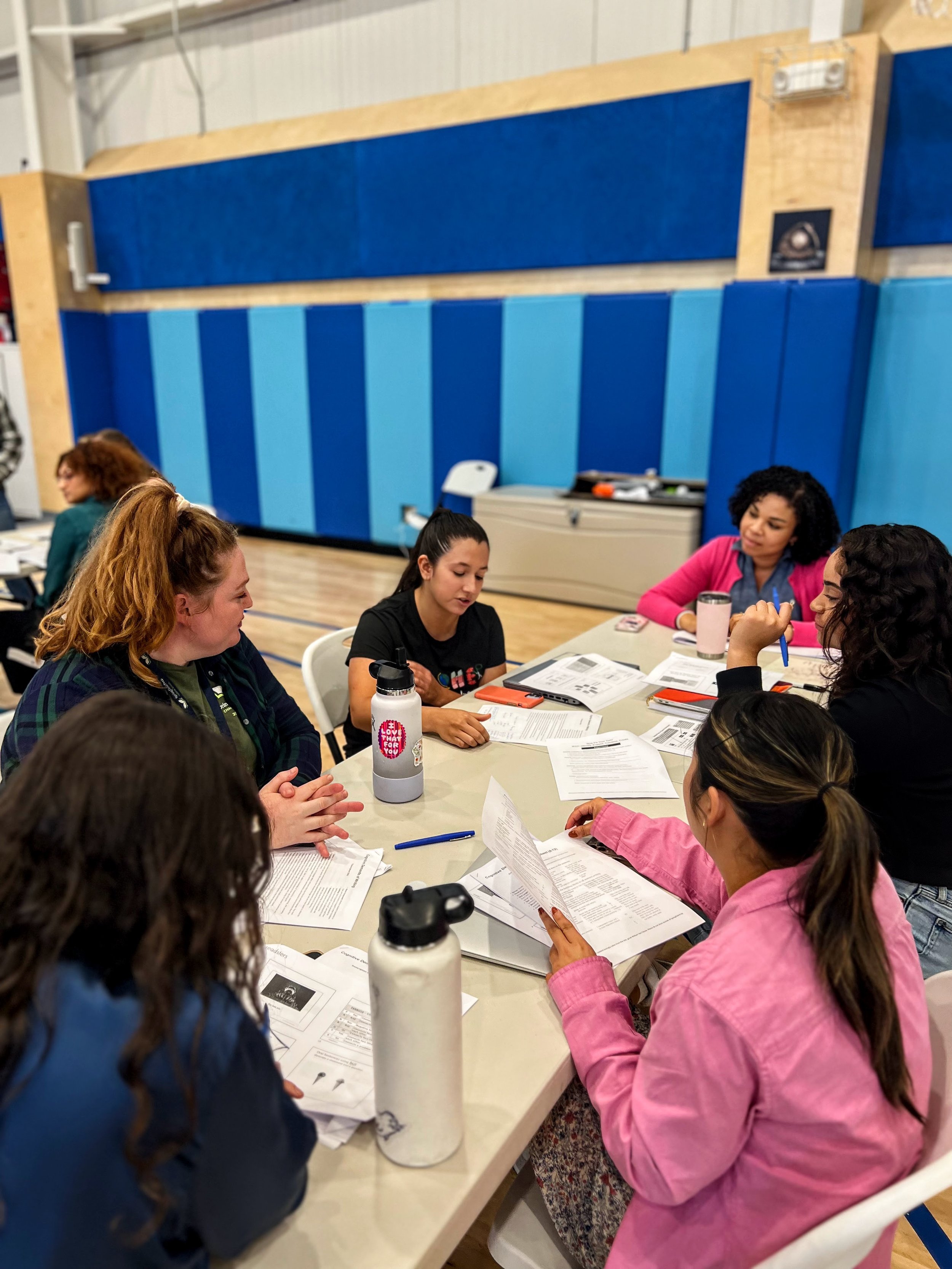An Inclusive Special-Education Model: Collaboration at the Center
Since joining the Springfield Prep team in 2018, Sarah Funke has played an important role in developing the Special Education program to align with our mission of providing an inclusive and rigorous education for all-- including students with disabilities.
Hear from Special Education Teacher & Team Chair, Sarah about what makes Springfield Prep’s special education model unique and drives her commitment to students.
Q&A with Ms. Funke
You’ve been teaching Special Education students for over 10 years. Why Special Education and what keeps you excited about this field?
There’s a high burn-out rate in special education; About 50 percent of special educators leave the field within the first five years. What keeps me in the field is my belief that every student can learn, and the students I’ve taught who’ve made leaps and bounds in their journey.
I do feel like it is one of my life’s purposes to be a teacher. I have a brother with autism and our mom always said I was his first teacher. I started as a Special Education Aid when I was 11, in the summers, working with preschool students with disabilities. Then I became a para-professional, and from there I just continued in different roles within special education for some time. I considered being a speech pathologist at one point, but I just loved the idea of having my own classroom.
At Springfield Prep, students with IEPs spend most of their time with their general education peers. From your perspective, what are the benefits of our inclusive model?
Something unique about our school is that each Friday, special education teachers have dedicated time in our schedules to meet with the grade-level teams we work with. We use this time to discuss as much as possible and troubleshoot about students. I’ve never worked at a school where the special-education students are everyone’s responsibility - and accountability is shared around reaching and meeting all students. Our collaborative model is one of the biggest drivers for student growth.
At Springfield Prep, you’ll never be alone in your work. I know that all of my team members have my back, especially whenever I’m struggling with a student. I know I can always go to a colleague to talk through it. There is never a feeling of “This is your kid, you figure it out”. If I come to a teacher and say, I’m struggling with XYZ, they’ll say ‘have you tried this’, or might say ‘‘This is working really well for me, give this a try’. We’re always troubleshooting and helping one another.
I like our model the best compared to other schools I’ve worked at previously because I am a huge advocate for inclusion. It reiterates the message, to every staff member and student, that all students can learn and grow - sometimes it just takes the right tools and efforts. It also encourages students to embrace diversity and be accepting of their peers with learning differences. All students deserve a rich, grade-level education and our model allows us to achieve that. It drives student growth and helps us to know our students 10 times better. It’s a group effort that’s inspiring and sustainable.


What collaborative systems support classroom teachers in meeting the needs of Special Education students? How do you gather and use input from classroom teachers to help your students reach their goals?
Good collaboration feels like good co-parenting - it's all about making sure we’re aligned and working well together to consistently meet the needs of our students! We try to keep one another in the loop about the strategies and tools that seem to work well. From there, we make sure to implement them uniformly across all spaces so that students are strengthening the same skills in both small and whole group settings).
For measuring growth, we use what’s called a B-Grid Tracker that tracks all special education students (in each grade) and unique goals. Special and general education teachers will update this tracker every week throughout the year and input data to collaborate around. Then on Fridays, we come together to assess the data, break down what we’re seeing, and make sure the content we’re planning in our classrooms is refined to target the specific goals of students.
“One of the strengths that I value at Springfield Prep is the dedication of our teachers to meet the needs of all of our learners, regardless of whether the student has a disability. Many students require brief interventions to help them master a skill or close a gap in learning. Teams collaborating and problem solving together to create student specific intervention plans for students make a positive difference for our scholars.”
What’s an example of strong collaboration that improves your work with students?
Special-education students really need consistency in order to learn, so the key is making sure there is alignment across our general and special-education classrooms. We’re most effective when we’re using the same learning tools and resources so that students are getting that repetition and re-affirming of what they’ve already been taught in the whole group setting. If I’m constantly throwing new language, and tools their way in my classroom, it might do more harm than good. Collaboration minimizes that possibility.
When I think about my work with the second-grade team, I think of how I collaborate with Ms. Glasser. She and I are constantly troubleshooting, not only on Fridays, to make sure we’re aligned and supporting one another as much as possible. We once met and I asked her about these special songs she came up with and was using in her classroom so that I could record them, learn them, and use them in my classroom. She was 100 percent willing to do that for me and it was great. She is just an incredible collaborator.
Ms. Funke and Ms. Glasser using the same word study tools in their classrooms!
What advice would you give to classroom teachers who want to collaborate more effectively with their special education teacher colleagues? And vice versa?
For classroom teachers, I’d say start with the question, “Hey, do you have a strategy for _____” As special educators, we love thinking of unique ways to help students, so those kinds of questions genuinely excite us. Our job is to teach in creative ways to help students build the skills they need to meet grade-level expectations. With solid collaboration and a curious mindset, so much can be achieved for students.
For special education teachers, dig into grade-level content as much as you can. Knowing in detail how students should be performing and what they are expected to know helps tremendously when shaping your instruction.







